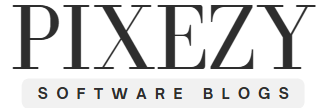Understanding an End User License Agreement (EULA) is vital for software users. It outlines the rules for using the software.
A EULA is a legal contract between the software provider and the user. By agreeing to it, users accept the terms set by the provider. This document can cover usage rights, restrictions, and any liabilities. Knowing what you agree to can protect you from legal issues.
It helps to ensure you use the software correctly and fairly. This introduction will guide you through the key aspects of an EULA, explaining its importance and what you need to know before accepting one. Stay informed and make better decisions with software agreements.

Credit: www.reddit.com
Introduction To Eula
The End User License Agreement (EULA) is a critical legal document. It outlines the terms and conditions for using software or applications. Before using software, users must agree to the EULA. This agreement protects both the developer and the user. It ensures both parties understand their rights and responsibilities.
Definition
A EULA is a legal contract between a software developer and the user. It grants the user the right to use the software. The EULA specifies how the software can and cannot be used. It also includes restrictions and obligations for the user. This contract is crucial for maintaining legal and ethical standards.
Importance
The EULA is important for several reasons. It protects the intellectual property of the developer. By clearly stating the terms, it prevents misuse of the software. It also helps in resolving disputes that might arise. Users understand what they are allowed to do with the software. This clarity reduces legal risks and enhances trust.
Key Components
An End User License Agreement (EULA) is a legal contract between a software provider and the user. It outlines the terms and conditions for using the software. Understanding the key components of a EULA is crucial for both parties. In this section, we will break down the essential elements of a EULA under the subheadings License Grant and Restrictions.
License Grant
The License Grant section specifies what the user is allowed to do with the software. It usually covers the following points:
- Scope of Use: Defines whether the license is for personal or commercial use.
- Duration: States the length of time the license is valid.
- Geographic Limitations: Specifies where the software can be used.
For example, a license might permit use on one device only. Or, it could allow installation on multiple devices but within a single household. This section clarifies these details, so users know their limits.
Restrictions
The Restrictions section outlines what the user cannot do with the software. Common restrictions include:
- Copying: Users cannot make unauthorized copies of the software.
- Modifying: Altering the software code is prohibited.
- Reselling: Users cannot sell the software to others.
- Reverse Engineering: Disassembling or decompiling the software is not allowed.
These restrictions protect the intellectual property of the software creator. By understanding these limits, users can avoid legal issues.
Both the License Grant and Restrictions sections are vital. They define what is permissible and what is not, helping to maintain a fair use environment. Always read these sections carefully to understand your rights and responsibilities.
User Rights
Understanding the User Rights in an End User License Agreement (EULA) is crucial. These rights define what users can do with the software. They ensure users know their limitations and obligations. This section will explain user rights under the EULA. It will focus on usage limitations and ownership.
Usage Limitations
The EULA often sets clear usage limitations. Users must follow these rules to use the software legally. These limitations can include the number of devices you can install the software on. They also cover the types of activities allowed. For instance, personal use versus commercial use. Violating these limitations can lead to penalties. It may even lead to legal action.
Ownership
Ownership is another key aspect of the EULA. The software company retains ownership of the software. Users only get a license to use it. This means users do not own the software itself. They own the right to use it under specified conditions. Understanding this helps users respect the intellectual property of the software maker. It also prevents unauthorized distribution or modification.
Limitations Of Liability
Understanding the Limitations of Liability section in an End User License Agreement (EULA) is crucial. This section outlines the boundaries within which the software provider is responsible. It clarifies what the company will not be liable for, protecting them from excessive claims. Knowing these limitations helps manage your expectations and responsibilities.
Warranty Disclaimers
Most EULAs include warranty disclaimers. These disclaimers state that the software is provided “as-is” and without warranties. The provider does not guarantee that the software will meet your needs or be error-free. They also do not promise uninterrupted use. Here’s a common disclaimer:
“The company makes no warranties, express or implied, regarding the software.”
Such disclaimers aim to limit the provider’s liability. They make clear that the user assumes all risks. This means you cannot hold the provider accountable for issues arising from use. Understanding this helps you make informed decisions about using the software.
Liability Caps
Liability caps are another critical component. These caps set a maximum limit on the amount the provider will pay in damages. Often, this limit is the amount you paid for the software. Here’s how it might look:
“Our liability is capped at the total amount paid by the user.”
This means if you paid $100 for the software, the maximum liability is $100. This cap protects the company from large financial losses. Knowing the cap helps you understand the risk involved. It also sets realistic expectations for compensation.
In summary, the Limitations of Liability section is essential. It includes warranty disclaimers and liability caps. These elements limit the provider’s responsibility and protect them from excessive claims.
Privacy Concerns
Understanding the privacy concerns associated with an End User License Agreement (EULA) is crucial. Users need to be aware of how their data is collected and used. This knowledge helps them make informed decisions about the software they use.
Data Collection
Data collection is often a key component of EULAs. Many software applications collect various types of user data. This can include:
- Personal information (name, email, address)
- Usage data (how often you use the app)
- Technical data (device type, operating system)
Companies collect this data for various reasons. Some use it to improve their products. Others may share it with third parties. It’s important to read the EULA to understand what data is collected.
Usage Policies
The usage policies outlined in a EULA detail how your data is used. These policies often cover:
- Data sharing with third parties
- Data storage and security measures
- User consent and data retention periods
Some companies use your data to send targeted advertisements. Others may use it to enhance user experience. Always check if the EULA allows you to opt-out of certain data uses. Knowing these policies can help protect your privacy.

Credit: www.loyalit.net
Termination Clauses
Termination clauses in an End User License Agreement (EULA) play a crucial role. They define the circumstances under which the agreement can end. Understanding these clauses helps users know their rights and responsibilities. Let’s dive deeper into the key aspects of termination clauses.
Breach Of Terms
A breach of terms occurs when a user violates the EULA’s conditions. This could involve unauthorized software use or sharing the software illegally. Such actions breach the agreement, triggering the termination clause.
Consequences
The consequences of breaching the EULA can be severe. The software provider may terminate the license immediately. Users may lose access to the software and any data stored within it. Legal actions can follow, including fines or other penalties. It’s important to read and understand the EULA thoroughly to avoid these consequences.
Dispute Resolution
Understanding the Dispute Resolution section of an End User License Agreement (EULA) is crucial. It outlines how conflicts between the user and the provider will be handled. This can save time and money, preventing lengthy court battles. Let’s dive into the key components:
Governing Law
The Governing Law clause specifies which country’s laws will apply in case of a dispute. This is important as laws vary from one region to another. It provides clarity and predictability.
| Region | Governing Law |
|---|---|
| United States | State Laws |
| European Union | EU Laws |
| Canada | Provincial Laws |
By specifying the governing law, both parties know which legal framework will be used. This reduces uncertainty and potential conflicts about applicable laws.
Arbitration
Arbitration is often preferred over traditional court proceedings. It is faster, less formal, and usually less expensive. An arbitrator, a neutral third party, makes the decision.
- Binding Arbitration: The decision is final and enforceable.
- Non-binding Arbitration: The decision can be appealed.
Most EULAs include a binding arbitration clause. This ensures that the dispute resolution process is efficient and binding. It also helps in maintaining a friendly relationship between the parties involved.
In summary, the Dispute Resolution section is vital for handling conflicts smoothly. It provides a clear path for resolving issues, ensuring that both parties understand their rights and obligations.

Credit: helpx.adobe.com
Tips For Users
Understanding an End User License Agreement (EULA) can be challenging. But it is crucial for protecting your rights. Here are some practical tips to help you navigate through the EULA effectively.
Reading The Eula
Many users skip reading the EULA. This is a mistake. The EULA contains important information about your rights and obligations.
- Take Your Time: Do not rush. Read each section carefully.
- Highlight Key Points: Focus on sections about data use, restrictions, and warranties.
- Look for Updates: Check if the EULA has been updated recently. New terms might affect your usage.
Seeking Legal Advice
If you have doubts about the EULA, consult a legal expert. They can explain complex terms and clauses.
Here are some steps to consider:
- Identify Ambiguous Terms: Highlight any terms or clauses you do not understand.
- Consult a Professional: Seek advice from a lawyer specializing in EULAs.
- Ask Questions: Do not hesitate to ask your lawyer to clarify any doubts.
Taking these steps ensures you understand what you agree to. It can prevent future issues related to software usage.
Frequently Asked Questions
What Is An End User License Agreement?
An End User License Agreement (EULA) is a legal contract. It outlines the terms under which software can be used. It is an agreement between the software developer and the user.
Why Is An Eula Important?
An EULA protects the rights of the software developer. It specifies how the software can be used. It helps prevent unauthorized use and distribution.
What Should An Eula Include?
An EULA should include the scope of the license. It should specify usage restrictions. It must detail termination conditions and liability limitations.
Can An Eula Be Negotiated?
Typically, EULAs are not negotiable. They are standard agreements. Users must accept the terms to use the software.
Conclusion
Understanding the End User License Agreement is crucial. It protects both users and developers. Read it carefully before accepting. This document outlines rights and responsibilities. It ensures fair use of software. Ignoring it can lead to issues. Stay informed and make educated choices.
A well-understood agreement can prevent future conflicts. Always prioritize understanding these terms. It benefits everyone involved.

I am a passionate digital marketer with a strong expertise in SEO and article writing. With years of experience in crafting compelling content and optimizing it for search engines, I help businesses enhance their online visibility and drive organic traffic. Whether it’s creating engaging blog posts or implementing effective SEO strategies, I am dedicated to delivering results that make an impact.
